The days of textbooks aren't exactly gone, but in today's classroom, the use of books is taking more of a back seat to the use of technology.
Based on a 2017-18 technology inventory report from the Georgia Department of Education, only a small number of Georgia classrooms are unequipped with some form of instructional computer - 4.6%. Even then, the overwhelming majority of the state's 111,881 classrooms have access to high speed internet, so Georgia's public school students should have easy access to digital content.
In the Hall County School District, technology has made its way quickly into the hands of students and teachers over the last several years. While that's not unusual, what is unique is the fact that Hall County is creating its own online content for classroom use. Eddie Millwood, the Director of Digital Convergence for the district, said Hall County Schools began the process of putting digital lessons in the hands of teachers and also giving them instruction on what to do with it.
"[We] tie in instruction with technology, not just handing it to the schools and saying 'here you go' but showing them how to bring it in and implement it in their classrooms," Millwood said.
To do the job effectively, Hall County Schools five years ago pulled a team of teachers out of the classroom and used them to create online lessons for the elementary, middle and high school levels.
"What we do is bring in three teachers a year - one elementary, one middle and one high- on a specific content area and we put them on assignment for a year and they work on building digital content for the teachers," Millwood said. "They also go out and help the teachers integrate the content into their instruction."
Millwood said the content development is done on a rotating basis. For example, the first year of the program, the team created math content. Then, a team created science content the next year; after that came the social studies content; in year four, a team developed language arts content. This year, the focus will once again be on math.
"Things change quickly," Millwood said. "Our math folks did a phenomenal job four years ago, but since then so much has changed that what we do now will look very, very different."
Laney Park, who was a classroom teacher at Wauka Mountain Elementary School for nine years, is in her second year as an Elementary Content Specialist, and she said while one content area gets a 'revamp' every four years, the materials are updated and tweaked all year. She said changes are based on new information - especially where science and social studies are concerned - but they're also based on teacher feedback.
"Our teachers can submit specific feedback on the website itself, on the content we're creating...there's professional learning materials on there they can read, in addition to lessons and additional resources," Park said.
Park said it would have been beneficial to have the same type of material available when she was in the classroom every day.
"Honestly, I would have been a better teacher because I would have had access to more information," Park said. "For example, with science, all we had with the content was the science textbook that was years old - definitely not completely current."
Millwood said that even though textbooks do become dated, that doesn't mean they're worthless. A textbook can be used in conjunction with technology and it can be sent home with a student who may not have digital access, although Millwood said that is rare, even for lower-income students.
"Textbooks have really become more of a resource, rather than the curriculum," Millwood said. "We've also found that the majority of our kids have [digital] access...even in our higher poverty areas they have it because nearly everybody has a smartphone and a lot of our digital resources that we use do have apps."
Students who do not have digital access at home are not penalized, Millwood said; teachers find a way to make materials available.
As far as cost is concerned, Millwood said they've determined the cost of a Chromebook - which is the main digital resource in Hall County classrooms - isn't much more than a high school textbook.
"A Chromebook can be used for English, math, science, social studies, Spanish...so you're really getting a lot more bang for your buck with these devices," Millwood said.
The budget for instructional content software for the school year in Hall County is $1,100,600, according to Aaron Turpin, Assistant Superintendent of Technology for Hall County Schools. In addition, the district has budgeted $719,000 for textbooks for the 2019-2020 school year.
Kevin Bales, the Assistant Superintendent for Teaching and Learning, said the district does have a warehouse for spare textbooks.
"We keep several hundred books at the warehouse, but even more are housed in book rooms out at individual schools," Bales said. "They do span all grade levels - elementary to high school."
When the textbooks outlive their usefulness, they're basically recycled.
" When books are no longer being utilized, we sell to a third party vendor and recoup a portion of the expended funds," Bales said.
Follow this link to read an article about The History of Tablets vs. Textbooks.

Eddie Millwood (standing) and Laney Park (seated) review some of the online content created for Hall County Elementary Schools. (Photo: B.J. Williams)
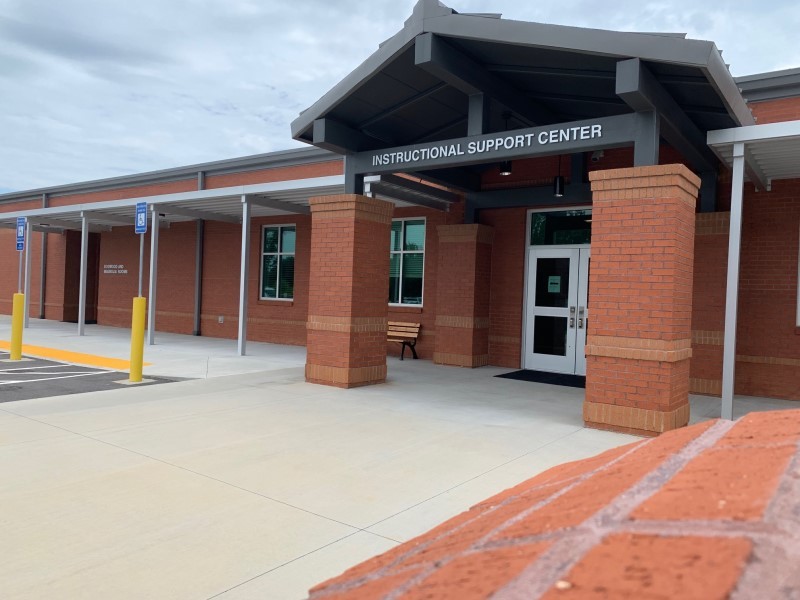
The Instructional Support Center for the Hall County School District. (Photo: B.J. Williams)

Spare textbooks are housed in a warehouse off Chestnut Street. Other textbooks are kept at individual Hall County school buildings. (Photo: Kevin Bales, Hall County Schools)
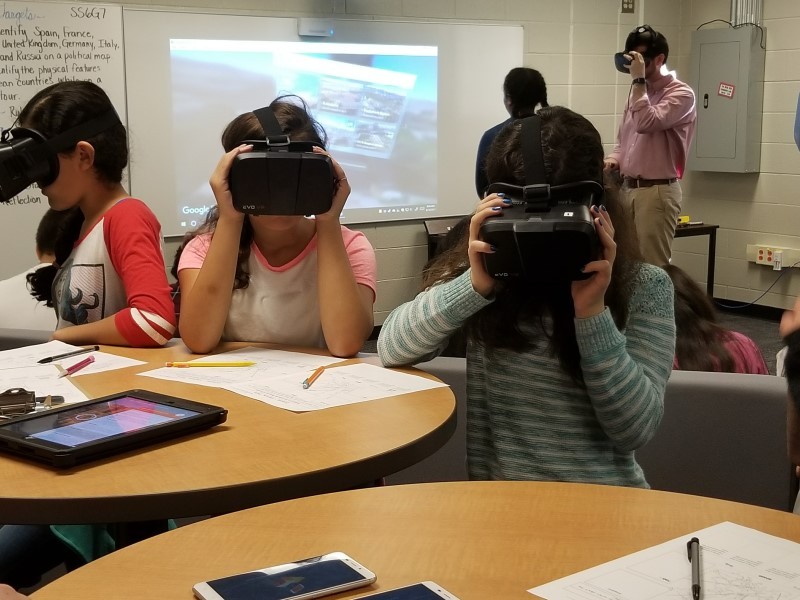
These students at East Hall Middle School are taking a virtual field trip to ancient Rome thanks to virtual reality devices. (Photo: Aaron Turpin, Hall County Schools)
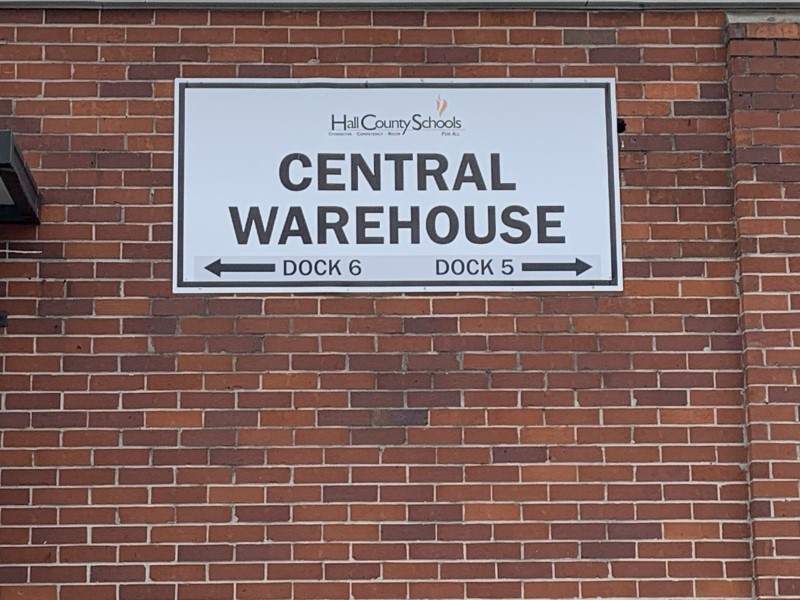
Hundreds of textbooks are stored at the Hall County School District central warehouse. (Photo: Kevin Bales, Hall County Schools)
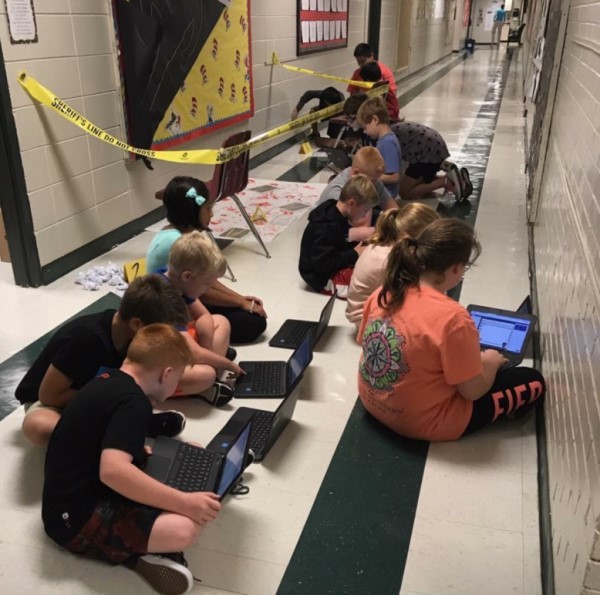
Students at Riverbend Elementary School use Chromebooks for the day's lessons. (Photo: Aaron Turpin, Hall County Schools)
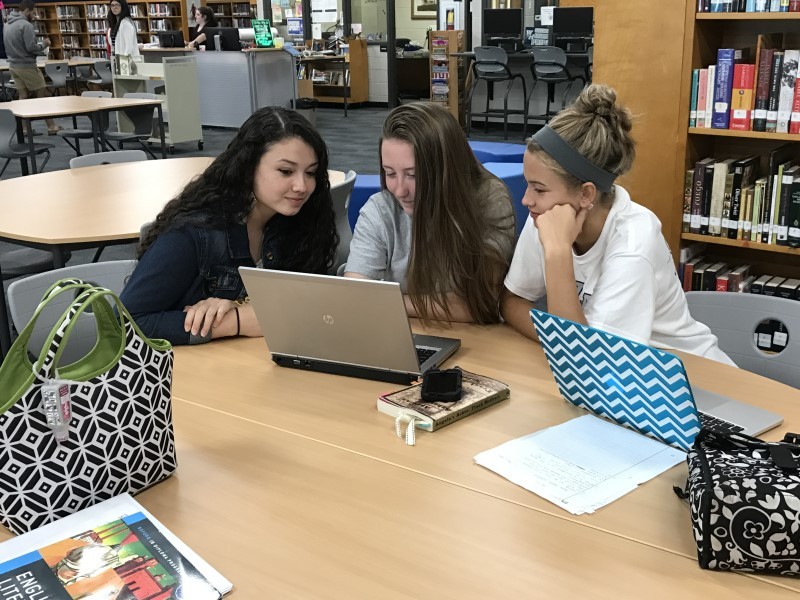
Students at West Hall High School work together on a project in the school's media center. (Photo: Aaron Turpin, Hall County Schools)
http://accesswdun.com/article/2019/7/817018/back-to-school-2019-making-the-move-from-textbooks-to-technology
